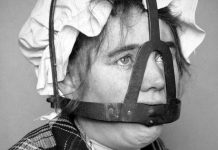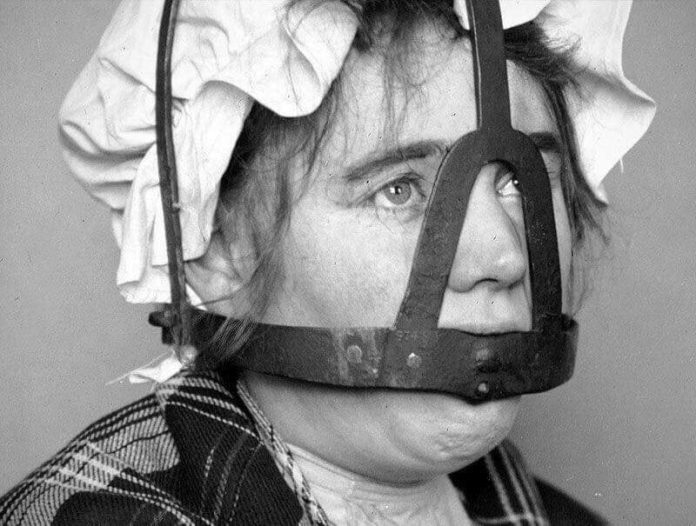In the annals of history, various methods have been employed to enforce social order and discipline, often to the detriment of individual rights and dignity. One such tool, the Iron ‘Scold’s Bridle,’ also known as ‘branks,’ stands as a stark reminder of the lengths societies have gone to suppress dissent and maintain authority. Originating in Brussels, Belgium, this grotesque mask, characterized by a large nose piece, exaggerated ears, and menacing horns, was specifically designed to publicly humiliate and punish those, mainly women, who dared to speak out against authority.
Historical Context:
The Iron ‘Scold’s Bridle’ gained notoriety during a time when societal norms were rigidly enforced, and any deviation from established standards was met with severe consequences. Historically, women were often marginalized, their voices stifled, and any form of rebellion against the prevailing authority was met with swift and harsh retribution. The use of the ‘Scold’s Bridle’ exemplifies the lengths to which society would go to suppress dissent, particularly from those considered transgressors.
Design and Purpose:
The design of the Iron ‘Scold’s Bridle’ was deliberately menacing, with features meant to evoke fear and shame. The large nose piece served not only as a physical restraint but also as a symbolic reminder of the silenced voice. The grotesque ears and two horns added an element of humiliation, further emphasizing the public nature of the punishment. The intention was to not only physically constrain the wearer but also to make them a spectacle, a cautionary tale for others who might contemplate challenging authority.
Punishing Dissent:
The primary targets of the ‘Scold’s Bridle’ were women who dared to speak out against authority or challenge societal norms. Accused of being “scolds” or “nags,” these women were subjected to public humiliation as a means of discouraging others from following suit. The device was often used in conjunction with other forms of punishment, creating a multifaceted approach to suppressing dissent and maintaining control.
Legacy and Reckoning:
As societies evolved and human rights gained prominence, the use of tools like the ‘Scold’s Bridle’ became increasingly unacceptable. The mask came to symbolize the darker aspects of history, where the powerful sought to silence and oppress the voices of those deemed subordinate. Today, these instruments serve as a reminder of the importance of upholding individual rights and the dangers of unchecked authority.
The Iron ‘Scold’s Bridle’ stands as a testament to the lengths to which societies have gone to stifle dissent and maintain control. Though it may have been a product of its time, its legacy persists as a reminder of the importance of defending individual rights and freedoms. In understanding the history of such tools, we are better equipped to navigate the present and build a future where voices are heard, and authority is held accountable.










